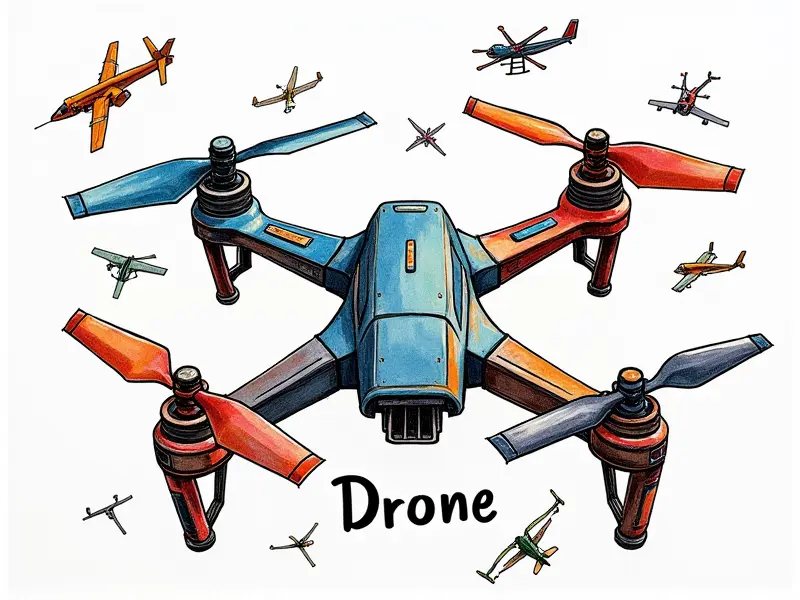RC flight rules

Essential RC Flight Rules Explained
Operating remote-controlled (RC) aircraft can be an exhilarating hobby, but it is crucial to adhere to the rules and regulations set forth by aviation authorities. This article will guide you through the essential RC flight rules that every enthusiast should know.
Top 5 RC Flying Laws
The top five laws governing RC flying are:
- Federal Aviation Administration (FAA) Regulations: The FAA oversees all airspace in the United States, including the operation of model aircraft. It's essential to understand and comply with their guidelines.
- No-Fly Zones: Certain areas are off-limits for RC flying due to security or safety reasons. These include military bases, airports, and other restricted zones.
- Line of Sight Requirement: Most regulations mandate that the operator maintain visual line of sight with their aircraft at all times.
- Airspace Classification: Different airspace classifications (e.g., Class G) have specific rules for model aircraft operations.
- Licensing and Registration: Some jurisdictions require registration or licensing for RC pilots, particularly those operating drones for commercial purposes.
Legalities of Operating RC Drones
Operating an RC drone comes with its own set of legal considerations. Here are some key points to keep in mind:
- Privacy Concerns: Be mindful of privacy laws when flying over private property or capturing images.
- Height Limits: There are restrictions on how high you can fly your drone, typically not exceeding 400 feet above ground level in the U.S.
- Night Flying Restrictions: Many areas prohibit flying RC drones during nighttime hours without proper lighting and clearance from local authorities.
Navigating RC Quadcopter Regulations
Quadcopters are popular among hobbyists due to their maneuverability. However, they also come with specific regulations:
- Airspace Compliance: Ensure that your quadcopter adheres to the airspace rules applicable in your area.
- Maintenance and Safety Checks: Regular maintenance is crucial for safe operation. Check batteries, propellers, and other components before each flight.
- Flight Training: Consider taking a training course or obtaining certification to enhance your skills and knowledge.
Stay Safe: RC Helicopter Flight Rules
Flying an RC helicopter requires adherence to specific safety guidelines:
- Weight Limits: Ensure that the total weight of the aircraft, including payload, does not exceed legal limits.
- Noisy Operations: Be considerate of noise regulations and avoid flying in residential areas during quiet hours.
- Emergency Procedures: Familiarize yourself with emergency landing techniques to ensure safe recovery of the aircraft in case of a malfunction.
FPV Racing Drone Legal Guidelines
Flying drones for First-Person View (FPV) racing involves unique challenges and regulations:
- Racing Leagues: Join established leagues that provide guidance on legal operations and safety standards.
- Flight Patterns: Stick to designated flight paths and avoid unauthorized areas.
- Safety Gear: Use proper protective gear, such as goggles and helmets, for safe viewing of the FPV feed.
RC Plane Flying Restrictions Overview
For RC plane enthusiasts, it's important to know about flying restrictions:
- Airspace Classification: Class G airspace is generally more permissive for model aircraft operations compared to other classifications.
- Flight Distance: Keep your planes within a reasonable distance from populated areas and sensitive locations.
- Weather Conditions: Avoid flying in adverse weather conditions that could affect visibility or control of the aircraft.
RC Model Aircraft Safety Guidelines
Safety is paramount when operating any RC model aircraft. Follow these guidelines to ensure a safe and enjoyable experience:
- Pilot Training: Take training courses to improve your skills and knowledge of the equipment.
- Maintenance Checks: Regularly inspect your aircraft for wear and tear, especially before each flight session.
- Safety Equipment: Use appropriate safety gear such as gloves, goggles, and protective clothing to prevent injuries.
RC Airspace Rules You Must Know
Familiarize yourself with the following airspace rules:
- Airspace Classification: Understand the different classifications of airspace (e.g., Class G) and their specific requirements for model aircraft.
- No-Fly Zones: Be aware of designated no-fly zones, such as military installations or restricted areas.
- Line of Sight Requirement: Maintain visual contact with your aircraft at all times to ensure safe operation.
Understanding No-Fly Zones for RC Pilots
No-fly zones are critical areas where the operation of model aircraft is prohibited. Here’s what you need to know:
- Military Installations: Avoid flying near military bases and other defense-related facilities.
- Airports and Airfields: Stay clear of airport perimeters to prevent interference with aircraft operations.
- National Parks and Wildlife Reserves: Respect the rules set by these protected areas, which may restrict or prohibit model aircraft flights.
International RC Flying Regulations Simplified
If you plan on flying your RC aircraft internationally, here are some key points to consider:
- Country-Specific Laws: Each country has its own set of regulations for model aircraft operations. Research and comply with local laws.
- Customs Clearance: Some countries may require customs clearance or documentation when importing RC equipment.
- International Organizations: Join international organizations that provide guidance on legal flying practices across borders.
Conclusion
Flying remote-controlled aircraft is a thrilling hobby, but it comes with responsibilities. By adhering to the essential RC flight rules and regulations outlined in this article, you can ensure safe and enjoyable experiences while respecting local laws and airspace guidelines. Stay informed about any updates or changes to these rules to continue enjoying your passion for model aviation responsibly.

